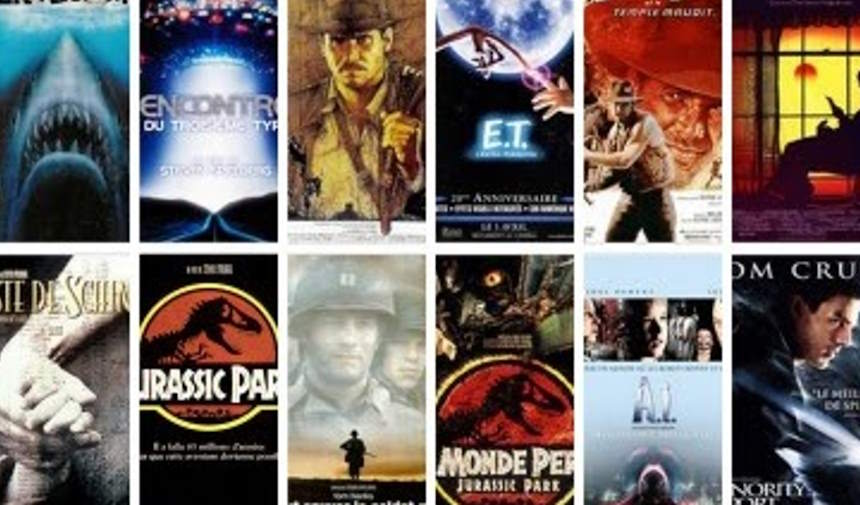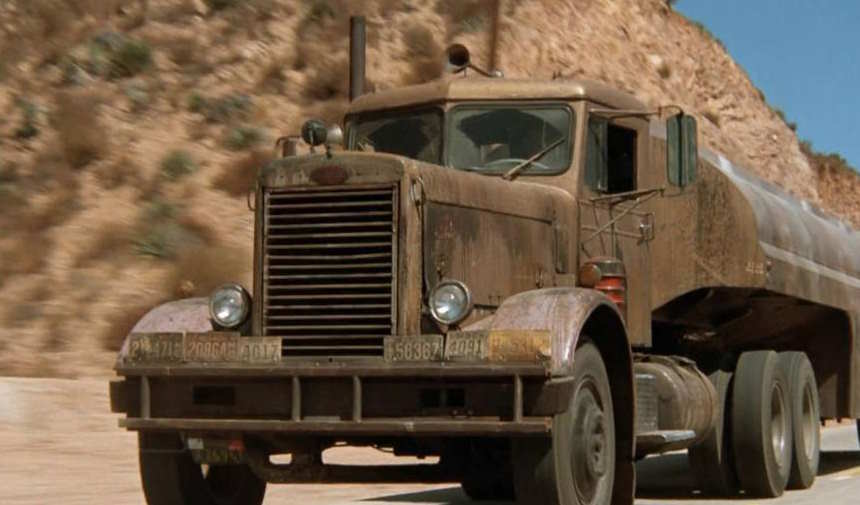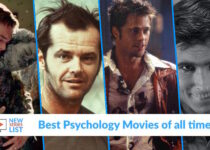The Ultimate Guide to Watching Steven Spielberg Movies in Chronological Order
Here is a perfect list of Steven Spielberg movies in chronological order. Steven Spielberg’s filmography is not only expansive but also showcases his incredible versatility as a filmmaker. Starting with his early works that hinted at his burgeoning talent, Spielberg has consistently delivered movies that have captivated audiences and critics alike.
Sugarland Express (1974) marked Spielberg’s theatrical feature debut and demonstrated his knack for storytelling. Jaws (1975) was a groundbreaking thriller that redefined the summer blockbuster and showcased Spielberg’s ability to create suspense. Close Encounters of the Third Kind (1977) was a visionary sci-fi film that cemented Spielberg’s status as a master director.
Raiders of the Lost Ark (1981) was the first installment in the Indiana Jones series, offering an exhilarating adventure that’s become iconic. E. T. the Extra-Terrestrial (1982) was a heartwarming tale of friendship between a young boy and an alien, this film remains one of Spielberg’s most beloved works.
As you can see, Steven Spielberg’s movies span various genres, including thrillers, science fiction, historical dramas, and adventures—each leaving an indelible mark on cinema history. What makes this list so compelling is not just the chronological order but understanding how each movie contributed to Spielberg’s growth as a filmmaker.
The Ultimate Guide to Watching Steven Spielberg Movies in Chronological Order

Steven Spielberg’s filmography is an illustrious journey through the evolution of modern cinema, showcasing a diverse array of genres and storytelling techniques. Watching his movies in chronological order allows you to witness the growth and maturation of his directorial vision from his early works in the 1970s to his more recent masterpieces.
Starting with “Duel” (1971) and progressing through iconic films like “Jaws” (1975), “E. T. the Extra-Terrestrial” (1982), “Jurassic Park” (1993), and up to contemporary successes such as “Ready Player One” (2018), you can observe how Spielberg’s style, thematic focus, and technical prowess have evolved over time. One compelling reason to watch Steven Spielberg’s movies in order is to appreciate how he has consistently pushed the boundaries of filmmaking.
Early on, Spielberg demonstrated a knack for creating suspense and human emotion in films like “Close Encounters of the Third Kind,” laying the groundwork for future cinematic innovations. As you move through his timeline, you’ll see how he masterfully tackles historical dramas such as “Schindler’s List” and war epics like “Saving Private Ryan,” each demonstrating an increasing sophistication in narrative complexity and visual storytelling.
Furthermore, experiencing Spielberg’s filmography chronologically provides insights into recurring themes that define his work—such as childhood wonder, human resilience, and the ethical use of technology. By following this sequence, viewers can better understand how these themes are revisited and refined across different contexts and eras within his body of work.
The Early Beginnings: Discover Spielberg’s First Films

When exploring the illustrious career of Steven Spielberg, it’s essential to delve into his early beginnings, where his genius first began to shine. Spielberg’s initial films laid the groundwork for what would become a monumental legacy in filmmaking.
“Duel” (1971) is often heralded as Spielberg’s breakout film. This made-for-TV movie showcased his ability to create suspense and tension with minimal resources. The story of a man being terrorized by a mysterious truck driver on a deserted highway captivated audiences and critics alike, proving that Spielberg had an innate talent for storytelling.
Following this success, “The Sugarland Express” (1974) hit theaters as Spielberg’s first theatrical release. This crime drama not only demonstrated his versatility but also highlighted his skill in developing deep, relatable characters amidst thrilling plotlines. The film was based on true events and received critical acclaim for its direction and narrative style.
However, it was “Jaws” (1975) that truly catapulted Spielberg into international fame. This iconic thriller about a man-eating shark terrorizing a small beach town became the highest-grossing film of its time and essentially invented the concept of the summer blockbuster. The masterful use of suspense and groundbreaking special effects set new standards in Hollywood.
Spielberg continued to push boundaries with “Close Encounters of the Third Kind” (1977), blending science fiction with human emotion in an unprecedented way. This film explored humanity’s fascination with extraterrestrial life through stunning visuals and compelling storytelling, further cementing Spielberg’s reputation as a visionary director.
These early films—“Duel,” “The Sugarland Express,” “Jaws,” and “Close Encounters of the Third Kind”—are not just stepping stones but cornerstones that illustrate Steven Spielberg’s evolving genius. They are must-watches for anyone looking to understand how one man’s vision could forever change the landscape of cinema.
The Blockbuster Era: Defining Modern Cinema with Iconic Hits
The early 1980s marked a transformative period in cinema, often referred to as the Blockbuster Era. This was a time when films weren’t just movies; they were cultural phenomena that captivated audiences worldwide. Among the most iconic hits that defined this era are “Raiders of the Lost Ark” (1981), “E.T. the Extra-Terrestrial” (1982), and “Indiana Jones and the Temple of Doom” (1984).
“Raiders of the Lost Ark,” released in 1981, introduced us to the charismatic archaeologist Indiana Jones. Directed by Steven Spielberg and produced by George Lucas, this film set a new standard for adventure movies with its thrilling action sequences and unforgettable characters. It wasn’t just a movie; it was an experience that left audiences on the edge of their seats.
Just a year later, Spielberg delivered another masterpiece with “E.T. the Extra-Terrestrial.” This 1982 classic told the heartwarming story of a young boy who befriends an alien stranded on Earth. The film’s emotional depth, combined with its groundbreaking special effects, made it an instant hit and solidified Spielberg’s reputation as a master storyteller.
In 1984, Indiana Jones returned in “Indiana Jones and the Temple of Doom.” This sequel took viewers on another exhilarating journey filled with danger and excitement. Once again, Spielberg’s direction and Harrison Ford’s magnetic performance as Indy kept audiences enthralled from start to finish.
The Evolution of a Master Storyteller: Exploring His Diverse Range in the ’90s and Early 2000s
Steven Spielberg’s journey through the ’90s and early 2000s showcases the evolution of a master storyteller, each film a testament to his diverse range and unparalleled ability to capture audiences. By examining Steven Spielberg movies in chronological order, one can witness his transformative impact on cinema.
In 1993, Spielberg delivered two monumental films that could not be more different yet equally compelling. “Jurassic Park” brought dinosaurs back to life with groundbreaking special effects, creating an exhilarating adventure that redefined the summer blockbuster. That same year, he released “Schindler’s List,” a harrowing and poignant portrayal of the Holocaust that earned him an Academy Award for Best Director. The stark contrast between these two films highlights Spielberg’s versatility and profound storytelling prowess.
Fast forward to 1998, Spielberg once again stunned audiences with “Saving Private Ryan.” This war epic is lauded for its realistic depiction of World War II battles and its deep emotional resonance. The film’s opening D-Day sequence remains one of the most powerful scenes in cinematic history.
The early 2000s continued to showcase Spielberg’s dynamic range with “Minority Report” (2002) and “Catch Me If You Can” (2002). In “Minority Report,” he ventured into science fiction with a thought-provoking narrative about pre-crime technology starring Tom Cruise. Later that year, Spielberg shifted gears entirely with “Catch Me If You Can,” a charming cat-and-mouse chase based on the true story of con artist Frank Abagnale Jr., played by Leonardo DiCaprio.
Exploring these films reveals more than just entertainment; it underscores Steven Spielberg’s ability to traverse genres seamlessly while maintaining his signature touch—captivating storytelling combined with technical brilliance. His work from this era not only solidified his status as a legendary director but also continues to inspire filmmakers today.
A New Millennium: Spielberg’s Continued Impact on Modern Cinema
Steven Spielberg has long been a titan in the world of cinema, and his influence only continued to grow as we entered the new millennium. Examining Steven Spielberg movies in chronological order reveals a seamless blend of innovation, storytelling, and emotional depth that keeps audiences captivated.
Take “War of the Worlds” (2005), for instance. This film redefined the sci-fi genre with its gripping narrative and groundbreaking special effects. Spielberg’s adaptation brought H.G. Wells’ classic novel to life in a way that was both terrifyingly real and cinematically stunning.
In the same year, Spielberg delivered “Munich” (2005), a powerful historical drama that delved into the complexities of political conflict and human morality. The film’s intense narrative and profound themes showcased Spielberg’s ability to tackle serious subject matter with sensitivity and depth.
Then came “Indiana Jones and the Kingdom of the Crystal Skull” (2008), where Spielberg revisited one of his most beloved franchises. Despite mixed reviews, this installment demonstrated his knack for blending adventure with nostalgia, keeping both long-time fans and new audiences engaged.
Spielberg’s impact on modern cinema is undeniable. His films not only entertain but also provoke thought, evoke emotion, and push technological boundaries. As we look at these works from 2000 onwards, it becomes clear that Steven Spielberg remains an indispensable force in shaping contemporary filmmaking.
The Recent Years: Exploring His Latest Works and Future Projects
When it comes to cinematic brilliance, few names resonate as powerfully as Steven Spielberg. Over the recent years, his filmography has continued to captivate audiences and critics alike, cementing his legacy as one of the greatest filmmakers of all time. Let’s delve into some of his latest masterpieces and take a peek at what the future holds for this legendary director.
Starting with “Lincoln,” released on November 16, 2012, Spielberg masterfully brought to life the final months of President Abraham Lincoln’s life. This historical drama was not only a box office success but also garnered critical acclaim for its poignant storytelling and Daniel Day-Lewis’s unforgettable performance.
Following “Lincoln,” Spielberg directed “Bridge of Spies,” which hit theaters on October 16, 2015. This Cold War thriller showcased his unparalleled ability to blend suspense with historical accuracy. Tom Hanks delivered a stellar performance in this gripping tale of espionage and diplomacy.
In 2018, Spielberg took us on a futuristic adventure with “Ready Player One.” This visually stunning film transported audiences into a virtual reality world filled with pop culture references and breathtaking action sequences. It was yet another testament to Spielberg’s versatility and visionary approach to filmmaking.
The year 2021 saw Spielberg tackling a beloved classic with his adaptation of “West Side Story.” This reimagining of the iconic musical not only honored the original but also brought fresh energy and contemporary relevance to the story. The film’s vibrant choreography and heartfelt performances were widely praised.
As we look ahead, excitement builds around upcoming Steven Spielberg films. While details remain under wraps, there’s no doubt that whatever he touches next will be nothing short of extraordinary. Whether it’s exploring new genres or revisiting timeless tales, Spielberg continues to push boundaries and redefine cinema.
In chronological order or not, each Steven Spielberg movie is a testament to his genius—a journey through decades marked by innovation, emotion, and unparalleled storytelling prowess. His recent works have only solidified what we’ve always known: that Steven Spielberg is an irreplaceable force in the world of filmmaking.


